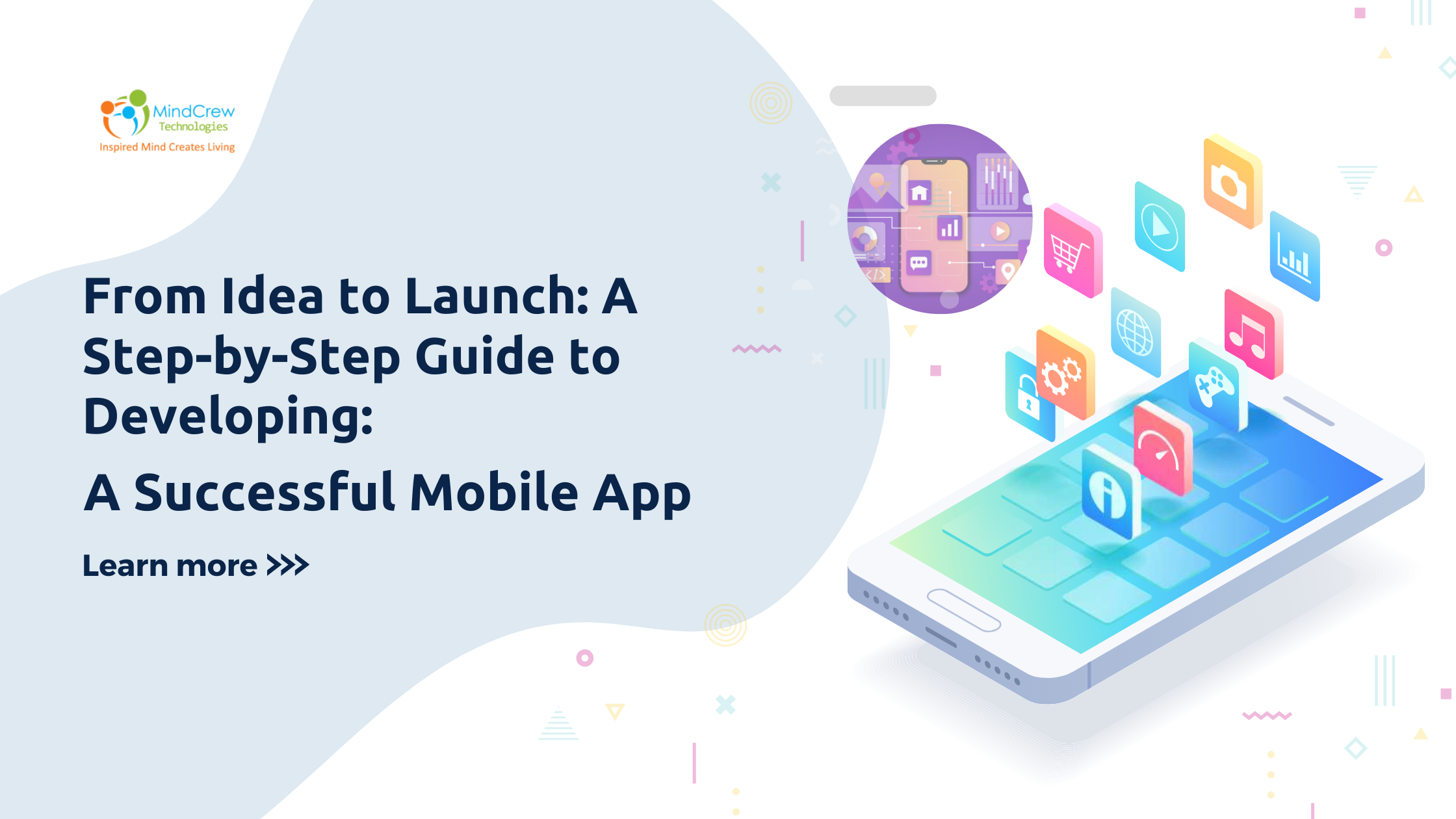From Idea to Launch: A Step-by-Step Guide to Developing a Successful Mobile App
Introduction
The mobile app market is booming, and for businesses, developing a mobile app can be a game-changer. However, the journey from a mere idea to a successful app launch is complex and requires careful planning, execution, and continuous improvement. This guide will walk you through the essential steps of mobile app development, providing a clear roadmap to turn your innovative idea into a thriving application. We will cover everything from initial concept development to post-launch strategies, ensuring that you have a comprehensive understanding of the entire process.
Step 1: Conceptualization and Research
Define Your Idea: Every successful app starts with a great idea. Begin by brainstorming and identifying the core problem your app will solve or the unique value it will provide. Ensure your idea is both innovative and practical.
Market Research: Conduct thorough market research to understand the demand for your app, identify your target audience, and analyze your competitors. This will help you refine your idea and create a unique selling proposition (USP).
Feasibility Study: Assess the technical feasibility of your app. Determine the platforms you want to target (iOS, Android, or both), and identify any potential technical challenges.
Keyword Research: Identify relevant keywords that potential users might use to find your app. This will help in app store optimization (ASO) later on. Some important keywords might include “mobile app development,” “app launch guide,” and “successful app strategies.”
Step 2: Planning and Strategy
Define Objectives and Goals: Set clear objectives and goals for your app. Determine what you want to achieve, whether it’s user engagement, revenue generation, or brand awareness.
Create a Detailed Roadmap: Develop a comprehensive roadmap outlining the entire development process. This should include milestones, timelines, and responsibilities.
Budget and Resource Allocation: Establish a realistic budget for your project. Consider costs related to development, design, testing, marketing, and post-launch support.
Build a Team: Assemble a team of skilled professionals, including developers, designers, project managers, and marketers. Ensure each member understands their role and responsibilities.
Platform Selection: Decide whether you want to develop a native app (specific to one platform), a cross-platform app (compatible with multiple platforms), or a web app. Each option has its pros and cons, so choose based on your target audience and budget.
Step 3: Design and Prototyping
User Experience (UX) Design: Focus on creating an intuitive and engaging user experience. Conduct user research, develop user personas, and create user journey maps.
Wireframing: Create wireframes to visualize the app’s layout and flow. This will serve as a blueprint for the design process.
User Interface (UI) Design: Design the app’s user interface, ensuring it is visually appealing and aligned with your brand. Use design principles such as consistency, simplicity, and accessibility.
Prototyping: Develop interactive prototypes to test the app’s functionality and usability. Gather feedback from stakeholders and potential users to refine the design.
Step 4: Development
Technical Architecture: Define the technical architecture of your app, including the backend infrastructure, database, and APIs. Choose the right technology stack based on your app’s requirements.
Agile Development: Adopt an agile development methodology to ensure flexibility and adaptability. Break down the development process into sprints, each focusing on specific features or components.
Coding and Integration: Begin coding the app, focusing on both frontend and backend development. Ensure seamless integration of all components and third-party services.
Regular Testing: Conduct regular testing throughout the development process to identify and fix bugs early. Use a combination of manual and automated testing to ensure comprehensive coverage.
Step 5: Testing and Quality Assurance
Alpha Testing: Perform alpha testing within your development team to identify and resolve any critical issues. This internal testing phase focuses on functionality and usability.
Beta Testing: Release a beta version of your app to a select group of users. Gather feedback on performance, usability, and overall user experience. Use this feedback to make necessary improvements.
Performance Testing: Conduct performance testing to ensure your app runs smoothly under various conditions. Test for load, stress, and scalability to guarantee optimal performance.
Security Testing: Prioritize security testing to protect user data and prevent vulnerabilities. Conduct penetration testing, code reviews, and vulnerability assessments.
Step 6: Pre-Launch Preparation
App Store Optimization (ASO): Optimize your app’s listing on app stores to improve visibility and attract more downloads. Use relevant keywords in the app title, description, and tags. Create compelling visuals, including screenshots and videos.
Marketing Strategy: Develop a marketing strategy to create buzz around your app. Utilize social media, content marketing, influencer partnerships, and email campaigns to reach your target audience.
Create a Landing Page: Build a landing page for your app, highlighting its features, benefits, and download links. Use this page to capture leads and direct traffic to the app stores.
Press Kit: Prepare a press kit containing all the necessary information about your app, including press releases, high-quality images, and videos. Distribute this kit to media outlets and bloggers.
Legal Considerations: Ensure your app complies with all relevant legal requirements, including data privacy laws and intellectual property rights. Draft clear terms of service and privacy policies.
Step 7: Launch
Submit to App Stores: Submit your app to the respective app stores (Apple App Store, Google Play Store). Follow their guidelines and ensure all necessary information is provided.
Launch Day: Plan a strategic launch day, coordinating with your marketing efforts. Monitor the app’s performance and user feedback closely.
Monitor and Respond: Actively monitor user reviews and feedback. Respond to queries and issues promptly to show users you value their input.
Step 8: Post-Launch and Maintenance
Gather and Analyze Data: Use analytics tools to gather data on user behavior, engagement, and app performance. Analyze this data to identify areas for improvement.
Regular Updates: Release regular updates to fix bugs, improve performance, and add new features. Keep your users engaged by continuously enhancing the app.
User Support: Provide excellent customer support to address user issues and queries. Use in-app messaging, email support, and FAQs to assist users.
Marketing and Promotion: Continue your marketing efforts to attract new users and retain existing ones. Use targeted campaigns, social media engagement, and referral programs.
Feedback Loop: Establish a feedback loop with your users to understand their needs and preferences. Use this feedback to guide future updates and improvements.
Conclusion
Developing a successful mobile app requires a strategic approach, meticulous planning, and a commitment to continuous improvement. By following these steps, you can turn your innovative idea into a thriving app that meets user needs and stands out in the competitive app market. Remember, the journey doesn’t end at launch; ongoing maintenance, updates, and user engagement are crucial for long-term success. At Mindcrew Technologies, we are dedicated to helping you navigate this journey and achieve your app development goals.







